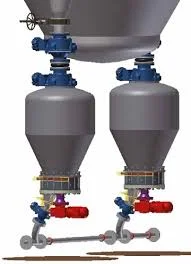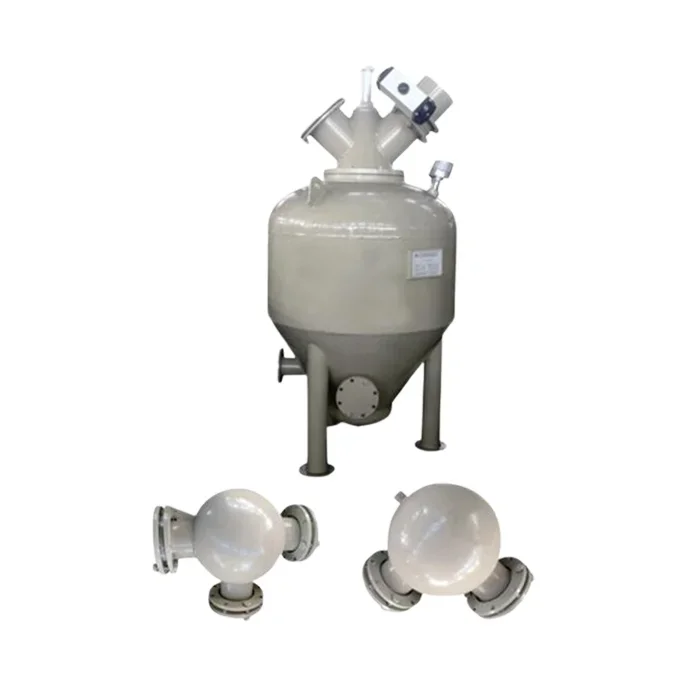In the industrial sector, the efficiency and reliability of material handling systems are paramount to maintaining productivity and ensuring a smooth operation. One such system that has gained significant attention for its efficiency and versatility is the tightly-phase pneumatic transport system. This article will delve into the intricacies of tightly-phase pneumatic transport, exploring its characteristics, applications, and the numerous advantages it offers over traditional material handling methods.
Understanding Tightly-Phase Pneumatic Transport
Tightly-phase pneumatic transport systems are designed for the efficient movement of materials such as quartz sand and other particulate matter, including new sand, recycled sand, and broken old sand. These systems operate on the principle of using air pressure to move materials through a pipeline, offering a seamless and automated process from start to finish.

Key Characteristics of Tightly-Phase Pneumatic Transport
The tightly-phase pneumatic transport system boasts several key characteristics that set it apart from other transport methods:
Fully Automatic Operation: The entire sending process is fully automated, reducing the need for manual intervention and minimizing the potential for human error.
Long-Distance Transportation: These systems are capable of carrying materials over long distances. With the ability to set up multiple links and unloaders along the pipeline, unloading can be performed at various points as needed.
Multi-Point Material Delivery: A single pneumatic conveying device can handle the material delivery to one or multiple points, making it highly versatile for various industrial applications.
High-Density, Low-Speed Transmission: Materials are transported at high density and low speed, which results in less pipe wear, reduced material breakage, and lower energy consumption.
Low Maintenance Costs: The design of these systems contributes to lower maintenance costs, as they feature special spherical elbows, tees, and unloaders that offer a longer service life.
Adjustable Air Volume: The transport volume can be conveniently adjusted by altering the amount of air used, providing a simple and effective means of controlling the system.
Dust-Free Operation: The entire transmission process is enclosed, preventing dust escape and ensuring a clean environment.
Flexible Arrangement: These systems can be arranged in various configurations to suit the specific needs of different industrial settings.
Applications of Tightly-Phase Pneumatic Transport
Tightly-phase pneumatic transport systems are particularly well-suited for industries that require the movement of bulk materials such as sand, which is commonly used in foundries, glass manufacturing, and construction. The ability to transport these materials efficiently and with minimal environmental impact makes these systems an attractive option for a wide range of applications.
Advantages Over Traditional Methods
When compared to traditional material handling methods, tightly-phase pneumatic transport systems offer several distinct advantages:
1. Enhanced Efficiency
The automated nature of tightly-phase pneumatic transport systems means that materials can be moved quickly and efficiently, without the need for manual labor. This not only speeds up the process but also reduces the likelihood of errors that can occur with manual handling.
2. Reduced Material Degradation
By transporting materials at high density and low speed, tightly-phase pneumatic systems minimize the degradation of the material being transported. This is particularly important for industries where the integrity of the material is crucial to the final product.
3. Lower Energy Consumption
The design of tightly-phase pneumatic transport systems allows for lower energy consumption compared to other methods. This not only reduces operational costs but also contributes to a smaller environmental footprint.
4. Minimal Environmental Impact
The enclosed nature of tightly-phase pneumatic transport systems means that there is no dust escape during the transportation process. This results in a cleaner working environment and complies with increasingly stringent environmental regulations.
5. Versatility and Flexibility
Tightly-phase pneumatic transport systems can be adapted to various industrial settings and can handle different types of materials. The flexibility in system design allows for customization to meet specific operational needs.
6. Reduced Maintenance and Downtime
The use of special components such as spherical elbows and tees in tightly-phase pneumatic transport systems contributes to a longer service life and reduced maintenance requirements. This translates to less downtime and lower maintenance costs over the system's lifespan.
Case Studies and Real-World Applications
To further illustrate the advantages of tightly-phase pneumatic transport systems, let's consider a few real-world applications:
Foundry Industry
In the foundry industry, the handling of sand is a critical process. Tightly-phase pneumatic transport systems have been implemented to move sand from storage to molding machines, reducing the time and labor required for this process. The systems' ability to handle high-density materials at low speeds ensures that the sand arrives at its destination with minimal degradation, maintaining the quality of the final product.
Glass Manufacturing
In glass manufacturing, the transportation of raw materials such as sand is essential. Tightly-phase pneumatic transport systems provide a dust-free and efficient method of moving these materials, ensuring a clean production environment and reducing the risk of contamination.
Construction
In construction, the movement of materials such as sand and aggregate is a common requirement. Tightly-phase pneumatic transport systems offer a solution that is not only efficient but also environmentally friendly, reducing the impact on the surrounding area.

Conclusion
Tightly-phase pneumatic transport systems represent a significant advancement in material handling technology. Their ability to move materials efficiently, with minimal environmental impact and reduced maintenance, makes them an attractive option for a variety of industries. As businesses continue to seek ways to improve efficiency and reduce costs, the adoption of tightly-phase pneumatic transport systems is likely to increase. With their numerous advantages over traditional methods, these systems are poised to play a crucial role in the future of industrial material handling.
Exploring the Industrial Applications of Tightly-Phase Pneumatic Transport
